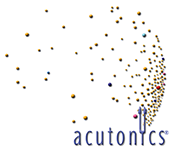By Ellen F. Franklin, PhD
Massage Magazine, July 2012
“I have been using sound therapeutically since 1984, when I began my practice in massage therapy,” said massage therapist Carmen Cicotti of Lopez Island, Washington. “I remember my teacher selecting pieces of music that displayed transcendental qualities, from synthetic, ethereal compilations to simple cultural instrumental pieces and the sounds of nature.”
Cicotti views music as a universal language, a carrier wave, that supports the body in an actual rhythmic unwinding of muscle constriction, fibrous adhesions of collagen and scar tissue. “The massage itself is musical in nature, especially when you incorporate rhythmic motions, such as tapotement, cross-fiber friction, rocking, effleurage and petrissage, she said. “Each of these approaches creates an intricately woven, delicate symphony that harmonizes with the client’s breath.”
Although Cicotti is trained in massage, craniosacral, shiatsu, nutritional therapy and reiki, she believes the direct application of sound to the body through tuning forks, Tibetan bowls and other sound healing instruments is the most effective therapy she utilizes.
“I feel I am creating sound paintings, similar to the sand paintings created by Tibetan monks,” Cicotti said. “Each treatment is its own symphony, no two are ever alike, and people get off my table and say they can’t believe how they feel—[that] it was just like a massage, but better.”
Addressing Stress
This perception that sound vibration and music has specific benefits is supported by a growing body of research that supports the beneficial effects of sound and music to facilitate healthy functioning, boost immune function, reduce pain, combat stress, facilitate relaxation and promote well-being.
The use of music for healing dates back at least as far as ancient Greece, where Apollo was the god of both medicine and music, and it was believed music could retune the body to wholeness, restoring vital rhythms. Today, sound and music are used in many health care environments, including palliative care, pediatric oncology, in the background during surgical procedures, and to support the critically ill and those in transition.
Music has also been shown to reduce stress, which is a major factor in illness. Although practitioners cannot eradicate the conditions that cause stress, the use of sound and music techniques combined with massage provides support to people in their efforts to reduce physical pain, relax and come into proper relationship with the stressors in their lives.
Stress occurs when environmental demands exceed our ability to adapt and cope, and it often results in physiological and psychologically measurable events. Small amounts of stress may have positive outcomes, such as arousing us to act when in damage or helping us to become more resilient. However, far too common life events, such as work conflicts, financial concerns, injury and loss of a loved one, can impact a person’s health and well-being.
Everything in the universe is in a complex, rhythmic structural pattern of vibrational activity.
People often seek massage practitioners because of physical pain that may be exacerbated by severe stress in their lives. When we live in a state of constant stress, there are direct biological effects that increase the risk of disease. If the brain perceives danger, it engages the sympathetic nervous system, hypothalamic-pituitary-adrenal axis and inflammatory response. Interaction within these systems is bidirectional so that chronic stress and our immune response are interconnected, increasing the risk of inflammation, neurodegeneration and autoimmune disease.
The Language of Sound
The language of sound and music is filled with rich metaphors that aid in the understanding of its efficacy. Resonance, vibration, harmony, frequency, attunement and rhythm are all terms used to explore the concept of a musical universe.
Everything in the universe is in a complex, rhythmic structural pattern of vibrational activity. Within the body, there are biological rhythms that govern organic life. Lungs dilate and contract every three seconds; the heart beats 70 times per minute; the stomach contracts three times per minute; the ovaries release an egg every 28 days; the life span of red corpuscles is 128 days. Every organ, bone and tissue in the body has its own resonant frequency. Through resonance, it is possible for the vibrations of one body to reach out and touch or activate another body.
When things are in harmony, we experience a sense of coherence that is also achieved through certain combinations of sounds, which we perceive as pleasing. However, not all sounds are pleasing; some discordant sounds can be used to break up stagnation in the body, clear energetic blockages and reduce scar tissue. Some practitioners will work with rattles and drums using a staccato beat over the body to break up stagnation in the tissues.
The body will also entrain to certain vibrations and rhythms. Entrainment is the natural predisposition for the human body and its physiological processes to respond to and synchronize with both internal and external environments, including sounds and rhythms.
One example of this is the use of rhythmic drumming, which acts as a focus for concentration and breath, and is also used in shamanic work to facilitate altered state of consciousness. Nursing literature describes the principle of entrainment being used with premature twins. One twin was thriving and the other had a weak heart rhythm. Placed in the same incubator, the heart of the ill twin entrained to the heart of the healthy twin. Our bodies have the ability to entrain to certain sounds and to be transformed as a result.
Water and Sound
Water provides another important key to the efficacy of sound vibration. The human body is approximately 70 percent water our brain is 80 percent water, the lungs and heart are 75 percent water and our blood is about 50 percent water. Sound travels four times faster in water than in air, which makes the human body a natural sound resonator.
“Sound has transformed my practice and the experience of my clients,” stated Maren Good, NCTMB, a Westfield, New Jersey, massage therapist and reflexologist. Good incorporates tuning forks, gongs and Tibetan singing bowls into her clinical practice. She believes the use of sound tools provides greater pain relief and a profound sense of peace and relaxation for her clients.
“The use of sound, specifically Acutonics planetary tuning forks and Tibetan metal singing bowls, accesses deep levels of the musculoskeletal system,” Good said. “[Sound] not only prepares the way for manual therapy, but it immediately invites the client into a deeper state of receptivity.”
“I use tuning forks to aid in releasing muscle spasms, to bring relief from chronic conditions and on trigger points,” she added. “I always find a greater degree of pain relief when I incorporate the use of these sound tools.”
According to Good, playing a singing bowl placed on the sacrum effectively disperses low back pain. “The sound tools that I use always deliver greater pain relief for my clients while also giving them a profound sense of peace and relaxation,” she added.
In addition to her clinical practice, Good teaches at the Therapeutic Massage and Training Center in Westfield, New Jersey, where she introduces massage students to innovative ways to bring sound into their bodywork practice.
Sound and music provide many opportunities for your own self-care and client education.
Healing Music
The massage practitioners I spoke with have favorite music selections, but their choices are primarily instrumental and include Native American flute, gongs, Tibetan bowls, classical selections, sounds of nature and New Age music.
However, when working with a range of sound healing tools, many practitioners do not use background music but let the tools themselves create the sound envelope in the treatment space.
If you use music, it is also important to pay attention to the selection and volume. While traveling recently, I had a massage at the property where I stayed. The music piped into the treatment rooms was loud, repetitive and jarring. Despite the skill of the practitioner, my experience was diminished because of the music.
Sound and music provide many opportunities for our own self-care and client education. Consider suggesting specific pieces of music to promote relaxation. Tuning forks also lend themselves to client education. You also have an opportunity to teach your clients some basic techniques for self-care between visits to your office.
Greater Resonance
Barrie Andrews is a sound healer who specializes in Acutonics, shiatsu and Craniosacral Therapy near Taos, New Mexico. She holds certifications in medical, oncology and sports massage, and is a reiki master. Her early training was in medical massage, when there was a strong focus on the no-pain-no-gain philosophy. Today, she believes the incorporation of sound-based therapies into her clinical practice helped reorient her work to more gently support her clients’ joyful discovery of their own strength and healing capacity to bring their bodies into balance.
“I believe [sound healing] has changed my life and my practice,” Andrews said. “Using high quality tuning forks has tremendous benefit in injury prevention… I can often effect much greater and quicker relaxation in the local tissue prior to massaging the site.”
Andrews said sound healing makes it easier for her to perform fascial work, circulatory work and, most notably, to prevent injury to herself and her client when performing deep work.
“I feel the vibrations of the tuning forks in my hands, and find that even when I have done trigger point or cross-fiber friction, I feel vibrant when I complete a session,” she added. “I am attuned, more balanced and in greater resonance.”
The integration of sound and music into your clinical practice has the potential to transform your practice. It provides a deeper level of relief to your clients with less effort, while supporting them to come into physical resonance, harmony, balance, and an enhanced sense of physical and emotional well-being.

